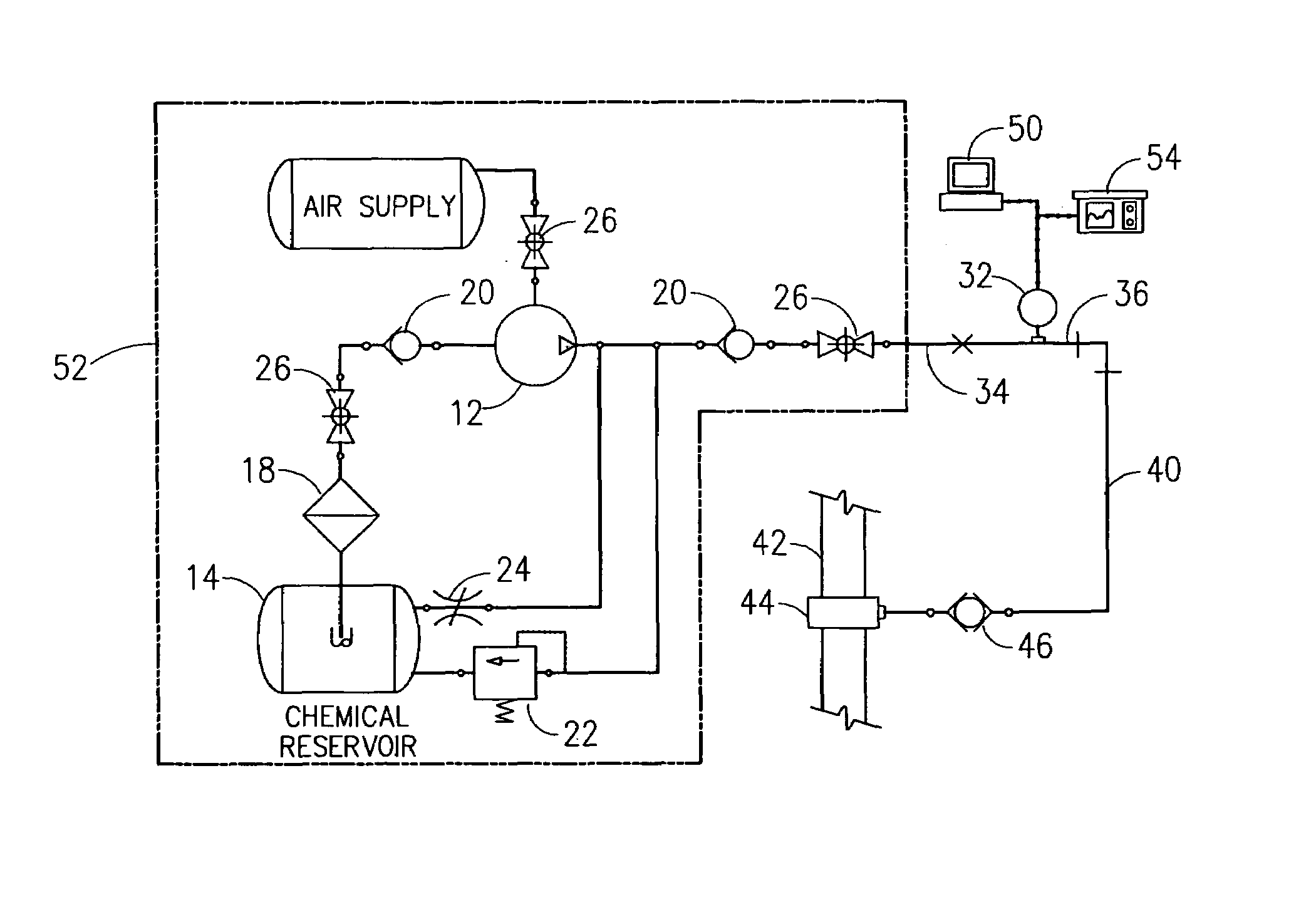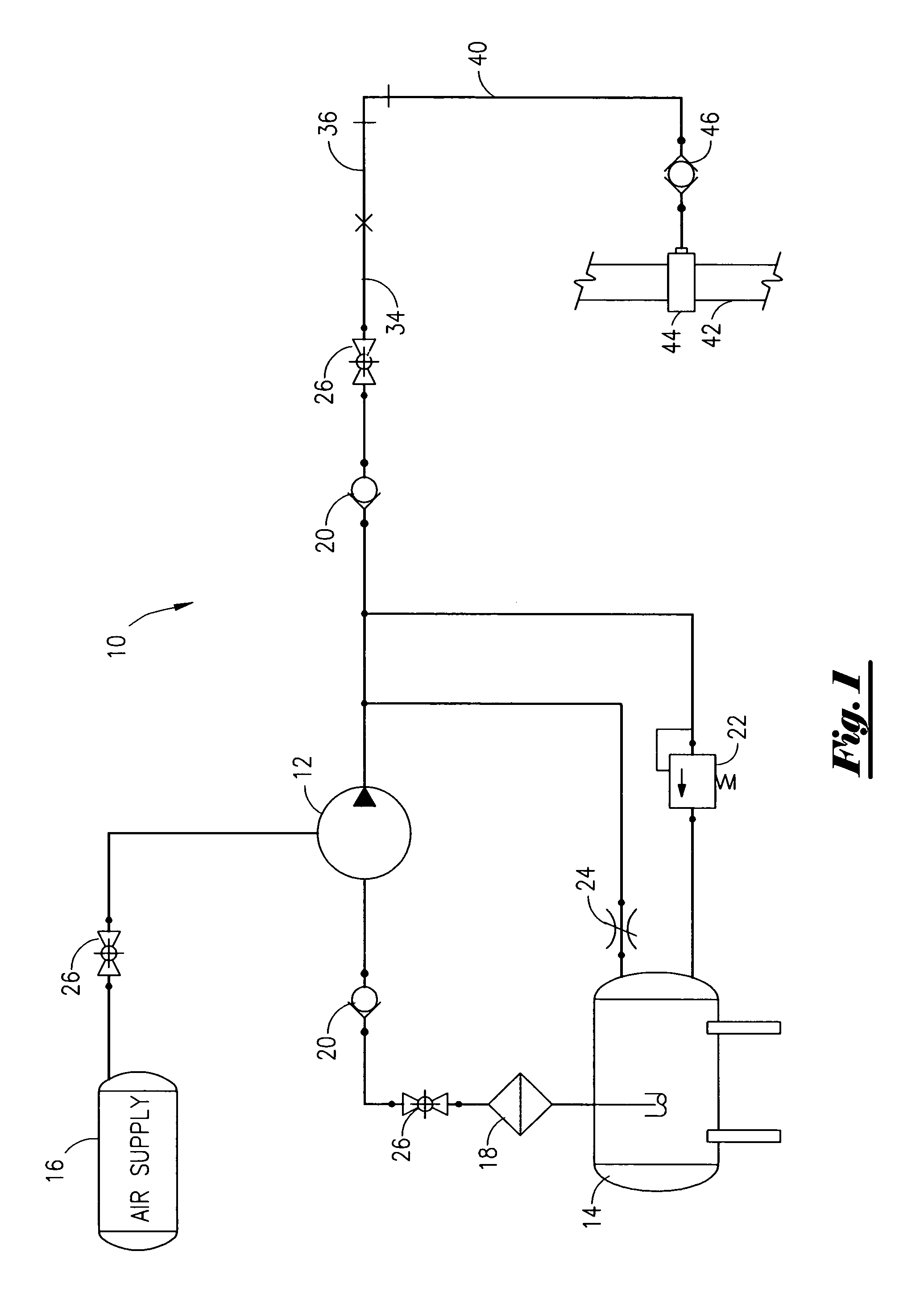Down-hole pressure monitoring system
a pressure monitoring and downhole technology, applied in the field of downhole pressure monitoring system, can solve the problems of adversely affecting system operation and excessive force, and achieve the effects of low cost, low cost, and accurate picture of formation pressure variations
- Summary
- Abstract
- Description
- Claims
- Application Information
AI Technical Summary
Benefits of technology
Problems solved by technology
Method used
Image
Examples
Embodiment Construction
[0036]An improved, permanent down-hole pressure monitoring system is disclosed that utilizes a modified oil and gas well chemical injection system. A basic chemical injection system or chemical pressure monitoring system (CPMS) 10, as illustrated in FIG. 1, includes a relatively low volume, high pressure injection pump 12, a chemical reservoir 14, an air supply 16, and the usual suction and discharge filters 18, check valves 20, safety valve 22, needle valve 24, and cutoff valves 26. Chemicals are discharged from the pump 12 through the discharge line 34 making external connection 36 with a chemical umbilical line leading to the wellhead 38. As seen in FIG. 2, a capillary tube 40 extending externally along the production casing 42 terminates at an injection port 44 near the bottom of the well formation, as shown in FIG. 1. Fluid flowing upwards through the production casing 42 is prevented from entering the chemical injection capillary tube by a down-hole double check or balance val...
PUM
 Login to View More
Login to View More Abstract
Description
Claims
Application Information
 Login to View More
Login to View More - R&D
- Intellectual Property
- Life Sciences
- Materials
- Tech Scout
- Unparalleled Data Quality
- Higher Quality Content
- 60% Fewer Hallucinations
Browse by: Latest US Patents, China's latest patents, Technical Efficacy Thesaurus, Application Domain, Technology Topic, Popular Technical Reports.
© 2025 PatSnap. All rights reserved.Legal|Privacy policy|Modern Slavery Act Transparency Statement|Sitemap|About US| Contact US: help@patsnap.com



